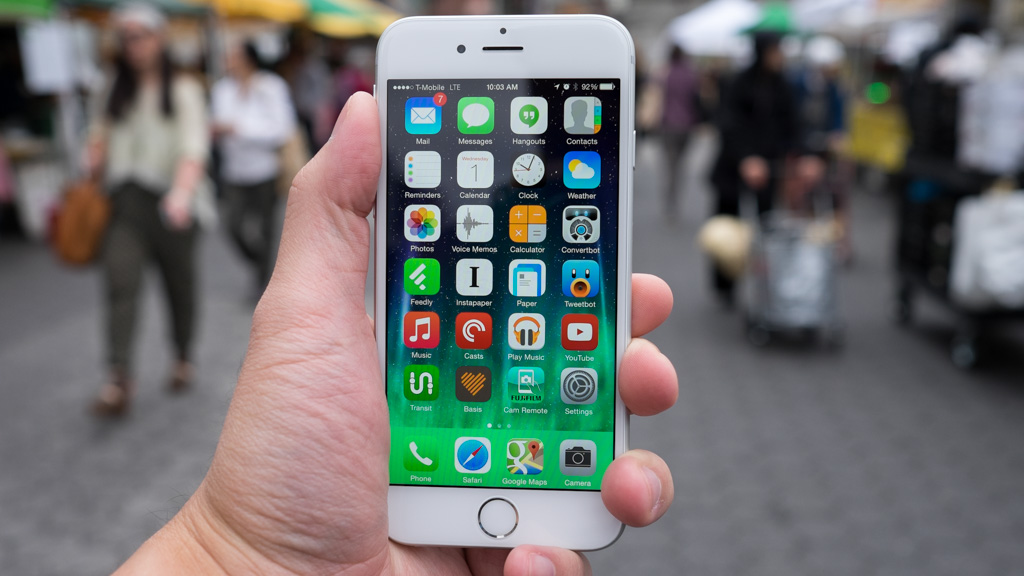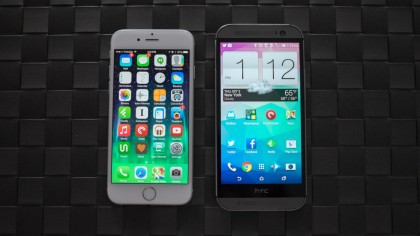
A few months ago, in the midst of switching carriers and desperately needing to upgrade my two-year-old iPhone 4S, I decided to make the leap to an Android phone.
After a long period of deliberating different devices, I picked the HTC One M8 - TechRadar's pick for one of the best Android handsets around. At first I was hesitant about making the switch, but I was excited to see the experiment through with the hope of moving over to Androids permanently.
Fast forward to the Apple launch where I found myself waiting for the new iPhone 6 to arrive in the mail where afterwards, I realized I would never go Android again. Here's why I went crawling back to the land of Apple.
The grass is always greener on the other side

The grass always looks greener on the other side. As part of the Apple camp I always longed for the freedom Android users had with customizing everything.
Everyone's iPhone home screen pretty much looks the same. Other than changing your background and moving around the app tiles, iOS offers few ways to customize your phone. The one advantage of keeping things homogenous on iOS made the interface feel much more fluid and snappier compared to Android.
Prior to my HTC One M8, I dabbled with owning a first-generation Nexus 7 tablet. I had no problems switching back and forth between my two devices despite the two different platforms. Looking through the Google Play Store, I could find almost every app I would use on my iPhone. Adding in the greater amount of freedom on Android made it alluring enough for me to switch.
With my mind made up, I decided to get my first Android smartphone with plans to fully assimilate myself into Google's ecosystem.
Sign up for breaking news, reviews, opinion, top tech deals, and more.
The honeymoon

Like a honeymoon, my first month with the HTC One M8 was amazing. The hardware by itself was a major step up from my old iPhone with a better screen, more power under the hood and amazing stereo speakers. It was simply a flat upgrade across the board save for some issues with the camera, which I'll get into later.
I had more fun using Android than I ever did with my tablet. I spent hours arranging every screen on my phone to my exact liking. As silly as it sounds, it was liberating to be able to move around your app tiles the way you see fit instead of having everything bumped off to the upper right on iOS.
Google Now was perhaps the most surprisingly useful tool on Android. Unlike Siri, which is pretty much a voice-controlled computer, Google Now would intelligently prompt me with directions and restaurant suggestions all on its own.
Trouble stirs

I started to feel less excited as I spent more time with Android thanks to the increasingly obvious flaws. My biggest gripe was the lack of notifications on the lockscreen (a feature that will reportedly come to Android L).
I quickly fixed the issue by downloading a third party app called SlideLock, but then another problem cropped up with the tiny virtual space bar on the stock Sense 6 keyboard. Again I solved my nitpicking issue by installing a custom keyboard. In time, I replaced the default launcher, swapped Gmail with Dropbox's Mailbox, and practically replaced every stock application with a better third-party solution.
"Don't like what comes stock with Android? Just replace it," a fellow Android-using friend once told me; this seems to be the mindset behind Android, which makes it so amazingly customizable. Yet, at the same time it's an admission that Android on its own lacks the same level of polish compared to iOS.
You can call iOS drab and restrictive, but Apple knows how to make a good-looking and intuitive interface. The Cupertino company opening up to the concept of custom keyboards could be the first step towards a more customizable iOS interface.
The app war rages on

Apple isn't just leading in better UI design, it's still the top platform for apps. iOS users have access to a few more apps not available on Android - like Facebook's Paper, Tweetbot and Yahoo News Digest. On top of this, Apple's mobile OS also often gets first dibs on applications that have or eventually will make it to Android - such as Lightroom Mobile and Instagram's Hyperlapse.
Apps simply come to iOS first with Android being an afterthought for most developers. This is true of gaming as well. Despite Android being used as the backbone for gaming devices like Nvidia's Shield Tablet and the MadCatz Mojo, games are just as big as a part of iOS. Case in point, Hearthstone has still yet to arrive in the Google Play Store when it has been available for iPad since April.
- 1
- 2
Current page: A rocky marriage with Android
Next Page Fundamental differences between Android and iOS
Kevin Lee was a former computing reporter at TechRadar. Kevin is now the SEO Updates Editor at IGN based in New York. He handles all of the best of tech buying guides while also dipping his hand in the entertainment and games evergreen content. Kevin has over eight years of experience in the tech and games publications with previous bylines at Polygon, PC World, and more. Outside of work, Kevin is major movie buff of cult and bad films. He also regularly plays flight & space sim and racing games. IRL he's a fan of archery, axe throwing, and board games.